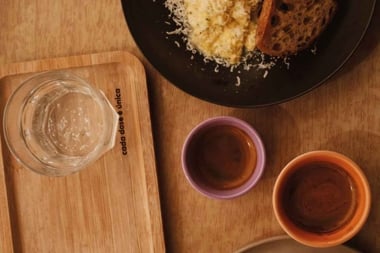Herb Wraps
Compresses and poultices all boil down (pun intended) to the same thing: applying healing herbs to the skin for a specific purpose
Compresses and poultices all boil down (pun intended) to the same thing: applying healing herbs to the skin for a specific purpose.
Let me give you an example. One day our old dog Pokey-Nose had been out on his Friday-evening rounds and returned home with a pronounced limp. On inspection I found that his leg was tender to the touch but not broken, so I applied a mash of comfrey leaf (Symphytum spp.) to the area, wrapped it up with an old cotton cloth and let him relax in front of the fire. After applying a few of these poultices off and on through the weekend, he was up and at his usual routine bright and early on Monday morning.
Hot compresses stimulate the production of both white and red blood cells, ease local pain, relax the muscles and vasodilate blood vessels by drawing blood into the area. They are generally made from an infusion (tea) of the more delicate plant parts (leaf, flower, berry) or a decoction (boiling) of tenacious plant material (roots, bark, seed).
Once the herb is prepared, a cotton or flannel cloth is dipped into the hot strained herbal solution, wrung out, fanned in the air until it has reached an acceptable temperature, then put in place. You can go a step further and cover the area with a towel or plastic food wrap and put a hot water bottle over it to retain the heat as long as possible. After the cloth has cooled, remove, resoak and reapply.
Calendula, camomile, chickweed, comfrey, dandelion flowers, plantain and St John's wort are just a few of the common herbs that may be used hot for sprains, strains, tendinitis and bruising.
Cold compresses are prepared by cooling any herbal solution and adding ice. For instance, a cold peppermint compress is prepared by making an infusion from one-half cup (125 grams) of peppermint leaves in four cups (one litre) of distilled water, straining and cooling the solution and adding ice. Cold compresses reduce local inflammation, swelling, fevers and increase vasoconstriction, shunting blood away from the area.
Poultices are used to soothe, heal and regenerate tissue. They also stimulate circulation and organ function, warm and relax muscles, and draw out toxins and foreign particles such as splinters. They are made by adding hot water to dried powdered herbs or fresh, coarsely ground herbs and mixing it into a mash. Let cool to a comfortable temperature, then place the herb directly on the affected area. The herbs may be covered with gauze and taped in place. Leave the poultice on until it dries to let it do its work. If it is difficult to remove, moisten it slightly to lift it off easily.
The comfrey poultice I used for Pokey-Nose has remarkable healing qualities due to a chemical constituent called allantoin, which is a cell proliferant. It works wonders to help heal wounds and mend bones. A mustard poultice or plaster placed over the lung area is an old remedy for breaking up congestion.
The art of making compresses and poultices is simple and sure. This old-fashioned technique of applying the healing herbs has worked for humans and beast for centuries.




